Fled – Kevin Brantley
A friend mentioned he had a light game from the same designer as Feudum, Mark K. Swanson. I love Feudum—it’s such a unique, heavy game that I’ll never get to play often because of the long rules overhead (we’re talking 1.5 hours for even a good teach!). Enter Fled, a multi-use tile drafting game where you’re trying to escape a prison with as much contraband as possible.
At first, the premise seemed cool—I’m always a fan of multi-use resources—but my enthusiasm quickly dropped the longer the teach went on. It’s supposed to be a fast game, but the teach is almost as long as the gameplay. Much like Feudum, there are a lot of “ifs, ands, or buts” in the rules, leading to too many conditional changes.
The turns are simple: play a tile to create more rooms in the prison and carry out two actions using the symbols on the tiles. You can mess with other players by moving the guards (warders) around to catch other naughty inmates. This can slow down players or even skip their turns entirely. However, everyone’s position on the board ends up being too far apart to interact meaningfully, so there’s no fun to be had.
But the weird part? If you move into a spot with a warder, nothing happens…? Are the guards just always asleep, or are they just ignoring your suspicious sneaking around?
It’s easy to get hosed by the tile draw; if you never get the contraband symbols, you could theoretically never score. Our game ended when the draw pile was empty, and another player and I shared a tie. It didn’t feel that great, since neither of us actually escaped the prison—we just got lucky with the right tiles. The condition timings of the “contraband track” change almost every turn, so you can’t really plan ahead.
Apparently, there are micro-expansions that include a ghost and a dog to fix some of the gameplay, but I won’t stick around to find out. It feels chaotic at four players—maybe it’s meant to work better at lower counts.
Safe to say, this is the worst game I’ve played in 2025. There are some interesting systems at play here, but it needs more development work and playtesting. Aside from the nice art and components, this game makes me want to stay in my jail cell and serve my sentence in silence. Go watch The Shawshank Redemption instead.
Ease of entry?:
★★★☆☆ – There were a few questions
Would I play it again?:
★☆☆☆☆ – Would play again but will cry about it
Read more articles from Kevin Brantley.
Diatoms – Justin Bell
An exceptional production with average play elements? That would summarize a lot of the games hitting crowdfunding in recent years, and when a simple tile-laying, pattern-building experience comes to the tabletop space, it is already hitting the on-ramp during rush hour. How do you separate in a world where games like Cascadia, Azul, and last year’s megahit Harmonies already exist?
Diatoms (2025, Ludoliminal) is A Game for A Certain Kind of Gamer. By that, I mean that the second you sit down and look at the play format, you know whether this is the kind of game for you or not. I have friends that play Azul and Harmonies on Board Game Arena a dozen or more times every week…if that is you, buy Diatoms right now. In Diatoms, you’ll take turns drafting tiles and placing them into a general grid, then taking separate “diatom” pieces to place on your player board to build patterns. (The best thing about Diatoms? The acknowledgement that this is multiplayer solitaire, so there is a solo campaign included right in the box. It knows I am basically playing solo, so you are best off just playing this one solo!)
As a production, Diatoms is a whopper: cool components, recessed spaces for tiles on the player boards, petri dishes holding those cool components, and a handsome array of extras: a totally unnecessary storage solution (unnecessary in a great way), score pads, individual player aids, and a variety of public milestone scoring goals in case you want to play this game dozens of times. All of this also means a $50 price point, exceeding the likes of the other, better games listed above. As a game, Diatoms was fine, but my one play was enough.
Ease of entry?
★★★★☆ – The odd bump or two
Would I play it again?
★★★☆☆ – Wouldn’t suggest it, but would happily play it
Read more articles from Justin Bell.
Numeri – Justin Bell
Sometimes, during my Dusty Euro game nights, my friends Beth and John break out fillers from the distant past, and usually those fillers are fantastic. Numeri? Not fantastic.
Numeri (originally published in 1973 and later republished by Schmidt Spiele and IELLO in one form or another multiple times over the years) has a simple concept: players roll a normal six-sided die and measure the result against the playing pieces in their color. Those pieces, numbered 1-5, can be placed and then moved forward along a simple points track based on the die total. Roll a 4, and you can move your 4 pawn or your 1 and 3 pawns. As you move them forward, the pawns land on juicier scoring spaces, but pieces can only advance by hopscotching other previously-placed pieces. And if there are any gaps, pieces can only fill the next gap in the chain.
When one piece reaches the end of the track, play ends and scores are tallied based on the present spaces occupied by the pawns. We called it well before that, because the game’s design has a troubling runaway leader problem…in a game with dice, where you have to hope that you roll the right total in order to move one or more pieces. Also, not every space on the track scores, so a number of factors have to go right to have a good time. There also appears to be a dominant strategy, were I to play this again—moving the 1, 2, and/or 3 is simply easier than moving the 4 or the 5 pawns. Why would I ever prioritize moving those dice in the future? A total miss. Numeri was reimagined a few years ago by Korean publisher Playte as Moon Leap.
Ease of entry?
★★★★★ – No sweat
Would I play it again?
☆☆☆☆☆ – No chance
Read more articles from Justin Bell.
The Anarchy – David McMillan
The Anarchy is the spiritual successor to 2021’s Hadrian’s Wall. In The Anarchy, designer Bobby Hill takes the players to 12th century England. The king has died, and there is a war going on to determine who will claim the throne.
Like Hadrian’s Wall, The Anarchy is a flip and fill. And, while there are some similarities between the two titles, being intimately familiar with Hadrian’s Wall is not going to give you a leg up here. If you’re in the mood for an x-and-write game with a lot of crunch to it, The Anarchy’s got you covered. It’s a beast of a game that makes its earlier counterpart look like a kid’s game. There are just so many more avenues to explore.
During my first (and so far, only) play this last weekend, I found myself constantly having to go back to the rule book to re-familiarize myself with a concept. While I blame some of this on trying to learn a complex game in the middle of a busy boardgaming convention, the rest of the blame falls squarely on the game itself. It’s a lot to take in. I anticipate that will change with more plays as I become more experienced.
And, I definitely anticipate many, many more plays.
Ease of entry?
★★☆☆☆ – Not an easy onboard
Would I play it again?
★★★★☆ – Would like to play it again
Read more articles from David McMillan.
Bandido – K. David Ladage
My wife plays Bandido on Board Game Arena quite often. I got her a physical copy as a gift a while back. After watching her play many, many games of this, I figured I would give it a try. The concept is simple: play cards in an attempt to close off all of the exits as prisoners continue to dig tunnels trying to escape. Overall, it gives me a feeling like Building an Elder God (which was itself a reskinned version of several railroad and water-pipe games of old). This is to say, I find it to be a decent distraction.
I had a good time. I mean, it can get frustrating to have the tunnel complex down to one or two open paths and all the cards available to you start splitting each path into two or three paths you now have to deal with. But that tends to elicit laughs more than groans. I’ll play it again, certainly. But I know (even at one player), there are better games out there.
Ease of entry?
★★★★★ – No sweat
Would I play it again?
★★★★☆ – Would like to play it again
Read more articles from K. David Ladage.







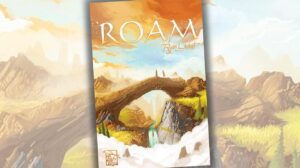
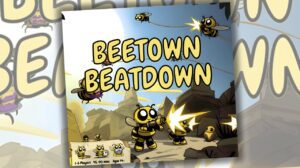
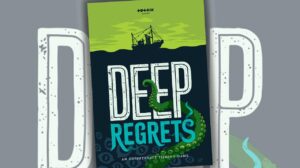
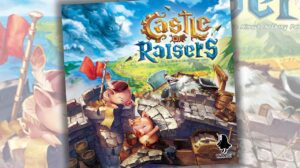


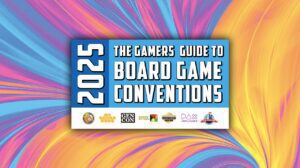
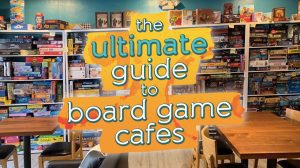
Add Comment